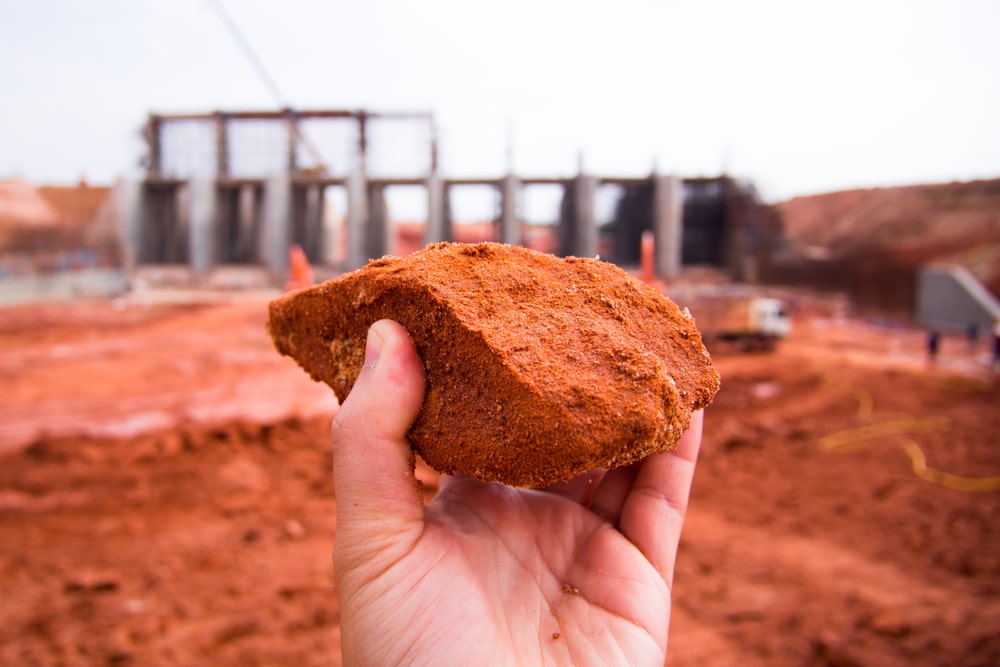Specialized Geotechnical Works for Lasting Building Solutions
Specialized Geotechnical Works for Lasting Building Solutions
Blog Article
How Consulting Engineers Enhance Geotechnical Design Projects: Insights Into Their Knowledge, Methods, and Collaborative Approaches
Consulting designers are essential in enhancing geotechnical design projects, applying their specialized expertise to browse the complexities of subsurface problems. Their joint strategies foster communication among varied job stakeholders, inevitably forming the task's trajectory.
Duty of Consulting Engineers
The know-how of seeking advice from engineers in geotechnical engineering is essential to the successful execution of construction jobs. These experts play a pivotal function in assessing soil and rock residential or commercial properties, which are crucial variables influencing layout and construction decisions. By conducting detailed website examinations, getting in touch with engineers gather crucial information that notifies the layout procedure, guaranteeing jobs are improved secure and appropriate ground.
Consulting designers likewise offer very useful understandings right into danger monitoring (geotechnical geologist). They determine potential geotechnical risks, such as landslides, dirt liquefaction, and settlement concerns, enabling stakeholders to apply effective reduction strategies. Their know-how aids in maximizing foundation styles, which can cause significant cost financial savings and enhanced safety
Moreover, consulting designers work as an essential web link in between job proprietors, architects, and contractors. Their ability to equate complex geotechnical information right into actionable suggestions fosters cooperation and helps with educated decision-making throughout the task lifecycle. This multidisciplinary strategy not just boosts project effectiveness but also makes sure compliance with regulatory requirements and finest practices.
Key Approaches in Geotechnical Engineering

One main approach is site investigation, which includes conducting area tests and lab analyses to collect data on subsurface problems. Strategies such as Criterion Penetration Screening (SPT) and Cone Penetration Screening (CPT) are extensively made use of to evaluate soil stratigraphy and strength. Additionally, geophysical approaches, including seismic and electrical resistivity surveys, offer non-invasive ways to assess subsurface attributes.
One more crucial approach is mathematical modeling, which enables designers to imitate different scenarios and forecast how soil-structure interactions will act under different loading problems. Finite Element Analysis (FEA) is a typical strategy employed in this context.
Furthermore, the layout of foundations, maintaining structures, and earthworks depends heavily on these approaches - geotechnical geologist. By incorporating advanced analytical tools with area information, speaking with engineers can develop customized services that resolve particular task obstacles, inevitably contributing to the security and security of building projects
Relevance of Soil Analysis
Soil analysis acts as a fundamental element in geotechnical engineering, giving vital understandings into the physical and chemical residential or commercial properties of soil required for effective building planning. Understanding dirt characteristics is vital for determining its load-bearing capability, drainage behavior, and capacity for settlement or instability. Detailed dirt examinations, consisting of tasting and laboratory screening, help determine criteria such as dirt type, moisture content, thickness, and shear strength.
These analyses notify the selection of suitable building strategies and materials, ultimately affecting job safety and durability. Natural soils may require different structure designs compared to granular dirts, requiring customized design options. Dirt evaluation aids in determining pollutants that could present threats to human health and wellness or the environment, allowing for the growth of reduction methods.
Integrating dirt analysis into the onset of task growth helps to lessen unexpected obstacles, ensuring that engineers can anticipate and resolve prospective problems before they escalate. By developing a comprehensive understanding of the website conditions, consulting engineers can optimize design performance and minimize expenses, therefore improving the total success of geotechnical engineering tasks.
Collective Strategies in Jobs
Effective geotechnical jobs usually rest on collective methods that bring together diverse proficiency from different techniques. Reliable cooperation amongst speaking with engineers, geologists, environmental scientists, and building and construction professionals is vital for resolving intricate challenges and optimizing job results. By leveraging the special abilities and understanding of each team member, tasks can take advantage of a holistic understanding of the website conditions, regulative needs, and design restraints.
Normal interaction and interdisciplinary meetings help with the Going Here sharing of understandings and cultivate a culture of teamwork. These collective initiatives enable the identification of prospective risks early in the project lifecycle, permitting timely mitigation strategies. Incorporating comments from stakeholders, consisting of neighborhood communities and governing agencies, makes sure that all viewpoints are considered, boosting job approval and conformity.
Furthermore, the integration of advanced modern technologies, such as Geographic Info Systems (GIS) and Building Info Modeling (BIM), additional boosts cooperation. These tools enable for the real-time sharing of data and visualization of geotechnical problems, advertising educated decision-making. Ultimately, a joint technique not just improves project implementation yet also lays the structure for cutting-edge solutions to complicated geotechnical engineering challenges.
Influence on Project End Results

Consulting designers use sophisticated approaches such as risk evaluation and predictive modeling, which boost the precision of task forecasts. Their ability to integrate ingenious innovations, like geotechnical instrumentation and information analytics, further fine-tunes the style and construction processes. As an outcome, jobs experience boosted performance, reduced expenses, and reduced hold-ups.
Furthermore, fostering reliable interaction and partnership amongst group members improves analytic capacities. When difficulties emerge, a joined front permits for swift identification of solutions, preventing possible problems. Eventually, the collective efforts of speaking with designers contribute to higher top quality outcomes, making certain that projects meet both governing standards and client assumptions.
Final Thought

Report this page